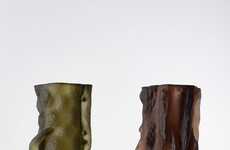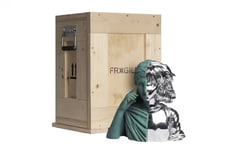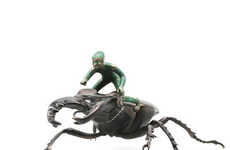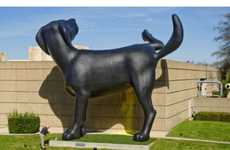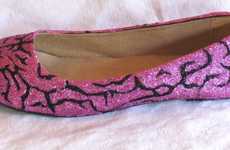
Bruno Walpoth Chisels Life-Like Statues Using Lime & Walnut Wood
Jason Soy — February 14, 2012 — Art & Design
References: walpoth & odditycentral
Not since the Renaissance has an artist produced stupendous hyperreal sculptures like these Bruno Walpoth pieces. Using huge lime and walnut wood blocks as his canvases, the Italian sculptor meticulously chisels out human forms so life-like that viewers will initially think they’re staring at models covered in white powder. For a talent to create such works in the 21st century is truly a delight for contemporary art lovers looking for new Michelangelo-esque content.
Adding to the difficulty of these Bruno Walpoth sculptures is his inclusion of modern-day fashion apparel. Rather than depicting his subjects completely in the nude, Walpoth often gives these statues pants. Trying to emulate fabric out of a solid medium no doubt presents new challenges, but Walpoth still manages to excel in realistically conveying all parts of his creations.
Adding to the difficulty of these Bruno Walpoth sculptures is his inclusion of modern-day fashion apparel. Rather than depicting his subjects completely in the nude, Walpoth often gives these statues pants. Trying to emulate fabric out of a solid medium no doubt presents new challenges, but Walpoth still manages to excel in realistically conveying all parts of his creations.
Trend Themes
1. Hyperreal Sculpture - There are opportunities for 3D printing companies to collaborate with artists to produce hyperreal sculptures using new materials and techniques.
2. Fashion and Sculpture Fusion - Fashion designers and sculptors have the opportunity to collaborate and incorporate clothing and accessories into sculptural pieces to create a new form of art and expression.
3. Traditional Art Techniques in Contemporary Times - Artists can explore the use of traditional techniques to create hyperreal sculptures that showcase contemporary themes and issues.
Industry Implications
1. Artificial Intelligence - AI companies can develop software that allows artists to create hyperreal sculptures using machine learning algorithms and generative design.
2. Fashion - Fashion companies can collaborate with sculptors to create pieces that showcase their designs in a new medium and expand their brand portfolio.
3. Woodworking - Woodworking companies can explore the use of new materials and techniques to produce hyperreal sculptures that push the boundaries of traditional woodworking practices.
6.9
Score
Popularity
Activity
Freshness


